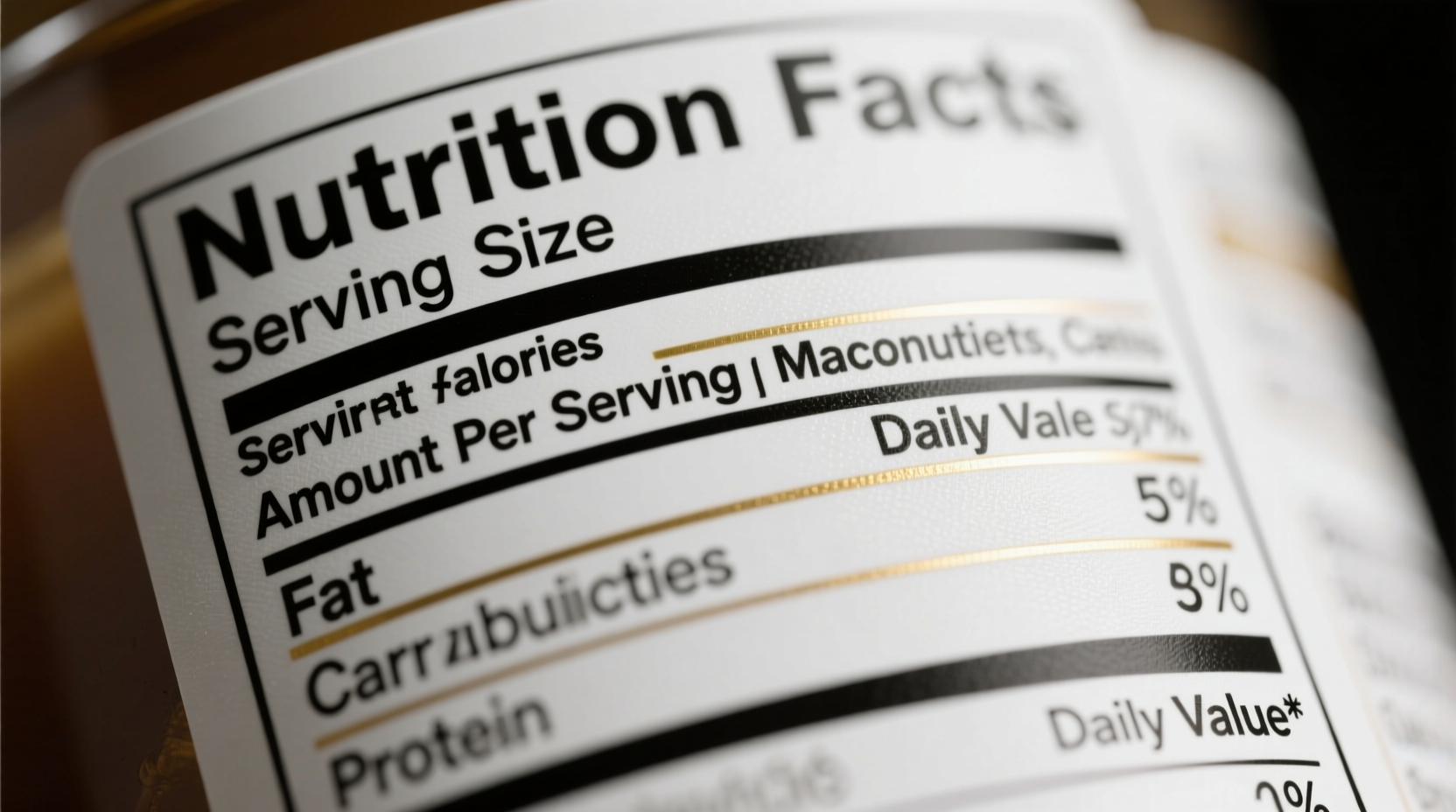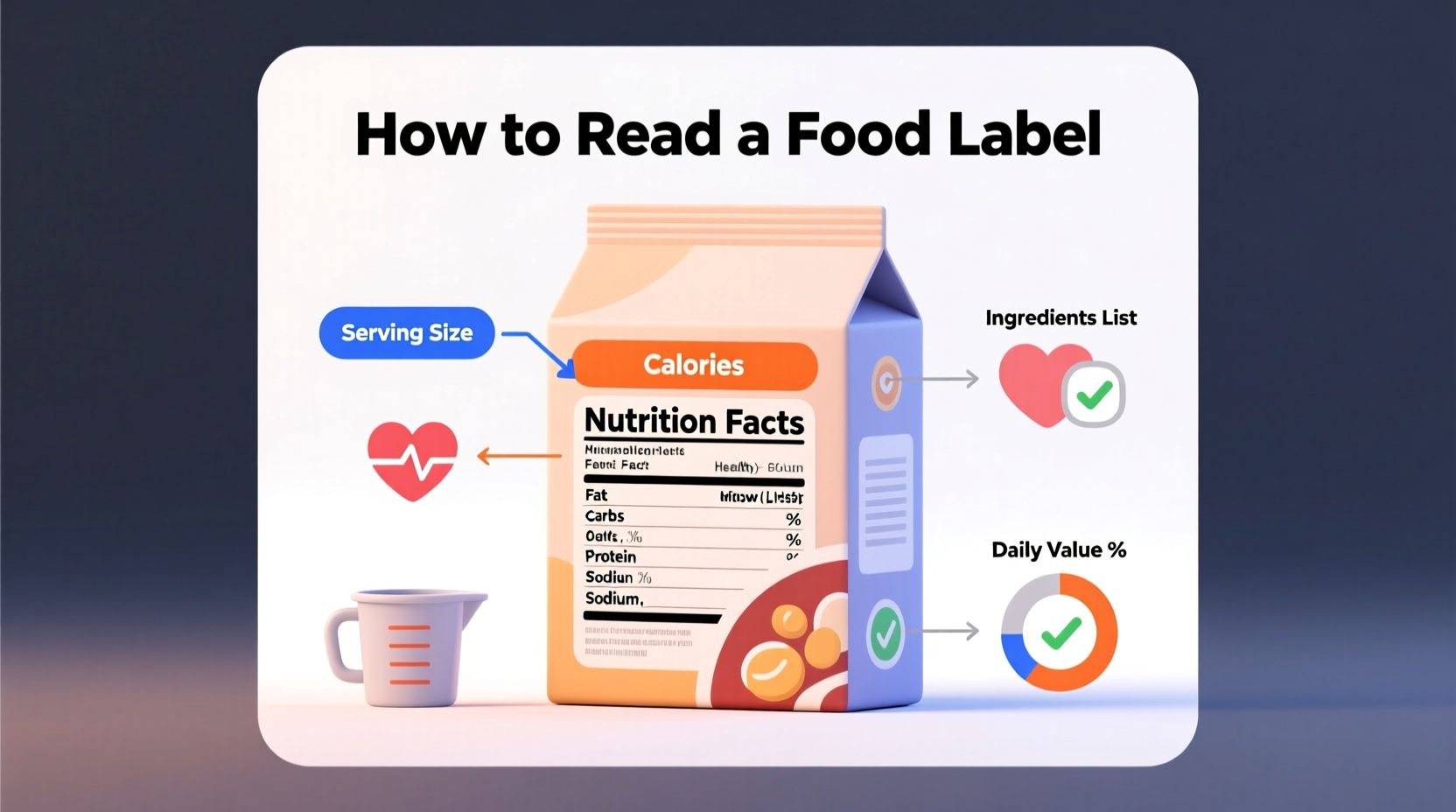Ever stand in the grocery aisle feeling overwhelmed by nutrition facts panels? You're not alone. Nearly 70% of shoppers admit they don't fully understand food labels, according to a FDA consumer study. But mastering this skill transforms your shopping experience and health outcomes. In just 5 minutes, you'll learn to decode labels like a nutrition professional—no degree required.
The Six-Step Food Label Decoding System
Step 1: Don't Skip the Serving Size Reality Check
Most label mistakes happen right here. That "150 calories" might be for half the package. Check two things:
- Actual serving size (e.g., 30g, 1 cup)
- Servings per container (that "single-serve" bag might contain 2.5 servings)
When comparing products, always calculate total package calories. A 16-ounce yogurt labeled 150 calories per 8-ounce serving actually contains 300 calories.
Step 2: Calorie Context Matters More Than Absolute Numbers
Calories aren't bad—they're energy. What matters is the nutrient density per calorie. Compare these yogurt options:
| Yogurt Type | Calories per Serving | Protein | Fiber | Added Sugar |
|---|---|---|---|---|
| Plain Greek | 100 | 17g | 0g | 0g |
| Flavored Low-Fat | 150 | 5g | 0g | 14g |
That 50-calorie difference hides a bigger story: the Greek version delivers triple the protein with zero added sugar. Always assess calories alongside nutrient content.
Step 3: Prioritize These Nutrients (and Ignore the Rest)
Don't waste mental energy on every line. Focus on what impacts your health most:
- Must-limit nutrients: Added sugars, saturated fat, sodium
- Must-boost nutrients: Fiber, vitamin D, calcium, iron, potassium
The FDA now requires added sugars to appear separately from total sugars—a game-changer revealed by their 2016 labeling overhaul. For heart health, keep saturated fat below 5% daily value per serving. For weight management, prioritize products with at least 3g fiber per serving.
Step 4: Decode the Ingredient List Like a Pro
Ingredients are listed by weight, so the first three items dominate the product. Watch for these red flags:
- Sugar aliases: High-fructose corn syrup, cane juice, maltose, dextrose (anything ending in "-ose")
- Hidden sodium: Monosodium glutamate (MSG), sodium benzoate, baking soda
- Artificial additives: Butylated hydroxyanisole (BHA), butylated hydroxytoluene (BHT)
When shopping for bread, choose options where "whole wheat" appears first—not "wheat flour" which is often just refined white flour.

Step 5: Master the % Daily Value Shortcuts
These percentages use a 2,000-calorie reference diet. Use them as quick guides:
- 5% or less = Low amount (good for fats/sugars)
- 20% or more = High amount (good for vitamins/fiber)
If you're managing diabetes, look for cereals with at least 20% daily fiber. For heart health, choose snacks under 10% saturated fat. The American Heart Association recommends keeping sodium under 1,500mg daily for optimal cardiovascular health.
Step 6: Spot Marketing Tricks in 10 Seconds
Front-of-package claims often mislead. Verify with the nutrition panel:
- "Natural": No FDA definition—check sugar content
- "Light": May mean reduced fat but higher sugar
- "Gluten-free": Doesn't mean low calorie or healthy
That "organic" cookie might still contain 12g of sugar per serving. Always check the actual numbers.
When Label Reading Becomes Critical
Label literacy matters most in specific situations where mistakes carry real consequences:
- Allergy management: The FDA requires 9 major allergens to be clearly identified (milk, eggs, fish, shellfish, tree nuts, peanuts, wheat, soybeans, sesame)
- Diabetes control: Total carbohydrates impact blood sugar more than sugar alone
- Kidney disease: Potassium and phosphorus content become crucial
For those with celiac disease, "gluten-free" certification ensures levels below 20ppm—the safe threshold established by the FDA.
Advanced Label Strategies for Specific Goals
For Weight Management
Look for the protein-to-carb ratio. Aim for at least 1:3 (e.g., 10g protein to 30g carbs). High-protein, high-fiber combinations keep you full longer. Greek yogurt with 17g protein beats low-fat yogurt with 5g protein, even if calories are similar.
For Heart Health
Focus on the saturated fat to fiber ratio. Ideal is 1:1 or lower. That granola bar with 3g saturated fat and 1g fiber? Skip it. Choose oatmeal with 0.5g saturated fat and 4g fiber instead. The American Heart Association recommends limiting saturated fat to 5-6% of daily calories.
For Athletic Performance
Check the carbohydrate quality. Look for products with whole food sources (oats, fruit) rather than added sugars. Post-workout, aim for 3:1 carb-to-protein ratio. That recovery shake with 45g carbs and 15g protein hits the sweet spot.
Avoid These 3 Common Label Traps
Trap #1: The Serving Size Shuffle
Manufacturers sometimes use unrealistically small serving sizes. That "100-calorie" snack pack might list 15 chips as a serving when you'd realistically eat 30. Always calculate the full package nutrition.
Trap #2: The "Healthy" Halo Effect
Foods labeled "organic," "natural," or "gluten-free" aren't automatically healthy. An organic cookie can still be high in sugar and fat. Verify with actual nutrition numbers.
Trap #3: The Percent Daily Value Distraction
Some nutrients use arbitrary daily values. Vitamin K's 10% daily value seems low, but it's actually substantial since most people get enough. Focus on nutrients where intake matters most: sodium, added sugars, saturated fat.











 浙公网安备
33010002000092号
浙公网安备
33010002000092号 浙B2-20120091-4
浙B2-20120091-4